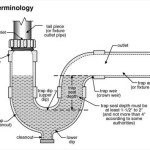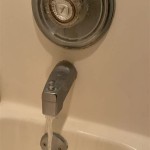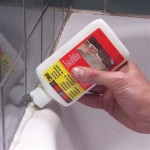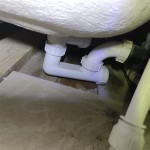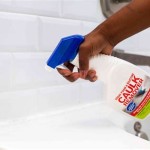Bathtub Drain Lever Stuck In Closed Position: Troubleshooting and Solutions
A bathtub drain lever stuck in the closed position presents a common household plumbing problem. This malfunction prevents water from draining properly, rendering the bathtub unusable until the issue is resolved. Understanding the underlying mechanisms and potential causes of this problem is crucial for effective troubleshooting and repair.
The typical pop-up bathtub drain system relies on a series of interconnected components. The lever, located near the overflow drain, actuates a linkage system that ultimately controls the movement of the drain stopper. When the lever is lifted, the linkage raises the stopper, allowing water to flow out. Conversely, pushing the lever down lowers the stopper, sealing the drain. Several factors can disrupt this delicate mechanism, leading to a stuck drain lever.
Identifying the Root Cause of the Problem
Before attempting any repairs, it is essential to identify the specific cause of the stuck lever. Several potential culprits exist, ranging from simple obstructions to more complex mechanical failures. A thorough examination of the drain system is necessary to pinpoint the problem.
The first step involves visual inspection. Carefully examine the lever itself. Is it bent or damaged? Does it move freely, or does it feel stiff? Any visible damage to the lever indicates that it may need replacement. Check the overflow drain opening for any visible debris, such as hair, soap scum, or other foreign objects. These obstructions can interfere with the linkage mechanism. Look for signs of corrosion around the lever and overflow drain. Corrosion can seize the moving parts, preventing them from functioning correctly.
Next, attempt to manipulate the lever. Can it be moved at all? If so, does it move smoothly, or does it require excessive force? If the lever moves but the drain remains closed, the problem likely lies within the linkage system or the stopper itself. If the lever is completely frozen in place, the issue may be related to corrosion or a major obstruction.
Consider the history of the drain. Has the problem developed gradually, or did it occur suddenly? A gradual decline in performance suggests a buildup of soap scum or mineral deposits. A sudden blockage indicates a more significant obstruction.
By carefully gathering information about the drain system's condition and behavior, it becomes possible to narrow down the list of potential causes and devise an appropriate troubleshooting strategy.
Addressing Common Obstructions
One of the most frequent causes of a stuck bathtub drain lever is the accumulation of debris within the drain system. Hair, soap scum, and mineral deposits can all contribute to this problem, hindering the movement of the linkage and stopper.
The simplest approach to clearing obstructions involves manual removal. Using a pair of needle-nose pliers or a similar tool, carefully reach into the overflow drain opening and attempt to extract any visible debris. A flexible grabber tool, often referred to as a "drain snake" or "hair snare," can be especially effective for this purpose. These tools are designed to reach deep into the drain and snag hair and other debris.
If manual removal proves insufficient, chemical drain cleaners can be used. However, caution is required when using these products. Harsh chemicals can damage pipes and fixtures, especially if used repeatedly or improperly. Always follow the manufacturer's instructions carefully, and wear appropriate protective gear, such as gloves and eye protection. Consider using enzyme-based drain cleaners, which are less harsh than chemical alternatives.
Another method for clearing obstructions involves using a plunger. Ensure that the bathtub contains enough water to cover the plunger cup. Seal the overflow drain opening with a wet cloth to prevent air from escaping. Firmly press the plunger over the drain opening and repeatedly plunge up and down. The pressure created by the plunger can dislodge debris and force it down the drain. Repeat the process several times, and then check to see if the drain is flowing freely.
If these methods fail to clear the obstruction, it may be necessary to disassemble the drain system to gain access to the blockage. This requires more advanced plumbing skills and may necessitate the use of specialized tools.
Repairing and Replacing Damaged Components
In some cases, a stuck bathtub drain lever is not caused by an obstruction but rather by a damaged or worn-out component. The lever itself, the linkage system, or the stopper may be broken, bent, or corroded, preventing the drain from functioning correctly.
If the lever is bent or broken, it will need to be replaced. Replacement levers are typically available at hardware stores or plumbing supply stores. When selecting a replacement lever, ensure that it is compatible with the existing drain system. The new lever must match the size, shape, and mounting configuration of the old one.
The linkage system, which connects the lever to the stopper, is another potential source of problems. Over time, the linkage can become corroded or bent, preventing it from moving freely. Inspect the linkage carefully for any signs of damage. If the linkage is corroded, try lubricating it with a penetrating oil. If the linkage is bent, attempt to straighten it carefully. If the linkage is severely damaged, it may need to be replaced.
The stopper itself can also cause problems. The stopper may be damaged, corroded, or improperly seated, preventing it from sealing the drain effectively. Inspect the stopper for any signs of damage. Clean the stopper thoroughly to remove any soap scum or mineral deposits. Ensure that the stopper is properly aligned and seated in the drain opening. If the stopper is severely damaged, it may need to be replaced.
Replacing these components requires some mechanical aptitude and basic plumbing skills. Before attempting any repairs, turn off the water supply to the bathtub. Disassemble the drain system carefully, taking note of the order in which the components are removed. Replace the damaged components with new ones, and then reassemble the drain system. Ensure that all connections are tight and leak-free. Test the drain to verify that it is functioning correctly.
It is important to note that some bathtub drain systems are more complex than others. If you are uncomfortable working with plumbing, it is best to hire a qualified plumber to perform the repairs. A professional plumber will have the necessary skills, tools, and experience to diagnose and repair the problem efficiently and effectively.
Preventive maintenance is crucial for avoiding future drain problems. Regularly clean the drain to remove hair and soap scum. Avoid using harsh chemicals, which can damage pipes and fixtures. Periodically lubricate the linkage system to keep it moving freely. By taking these simple steps, one can extend the life of bathtub drain system and prevent future headaches.

Bathtub How Can I Remove A Stuck Bath Stopper Assembly Home Improvement Stack Exchange

How To Fix A Stuck Bathtub Drain

Bathroom Repair How To A Pop Up Tub Drain Stopper

How To Fix A Bathtub Or Sink Pop Up Stopper

How To Remove A Bathtub Drain Stopper Step By Guide

How To Remove A Bathtub Drain Stopper

How To Fix A Trip Lever Bathtub Drain Stopper Hofen

How To Remove A Bathtub Drain Stopper
The Stopper In Bathroom Sink That Pulls Up And Down To Operate On A Rod Between Hot Cold Knobs No Longer Works Is Stuck Shut Where It Can T

How To Remove A Bathtub Drain The Home Depot
Related Posts


